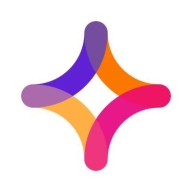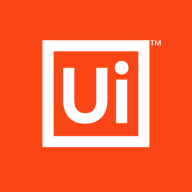

Jitterbit Harmony and UiPath Orchestrator compete in business process integration and automation. Data indicates that while Jitterbit Harmony is praised for its affordability and customer support, UiPath Orchestrator is preferred due to its advanced automation capabilities and comprehensive features.
Features: Jitterbit Harmony provides robust API management, flexible integration solutions, and efficient data connectivity. UiPath Orchestrator is notable for its advanced automation, centralized data collection, and AI-driven optimization. While Jitterbit focuses on integration, UiPath offers extensive automation and AI enhancements.
Room for Improvement: Jitterbit Harmony could broaden its automation capabilities, enhance its user interface for complex integration tasks, and improve scalability for larger enterprises. UiPath Orchestrator might benefit from simplified pricing structures, more intuitive onboarding for new users, and quicker resolution times in customer support scenarios.
Ease of Deployment and Customer Service: Jitterbit Harmony offers straightforward deployment and comprehensive support, ideal for seamless integrations. UiPath Orchestrator provides detailed automation guides with structured support, catering to extensive automation setups. Their approaches differ, with Jitterbit emphasizing integration ease and UiPath focusing on detailed automation assistance.
Pricing and ROI: Jitterbit Harmony is recognized for cost-effectiveness and substantial ROI in integration scenarios, offering flexible pricing. UiPath Orchestrator, though often seen as more expensive, delivers high ROI via its advanced features, validating its cost. Jitterbit's affordability contrasts with UiPath's premium pricing, which is justified by enhanced automation benefits.


Jitterbit Harmony is a comprehensive platform for data integration and API management, enabling seamless synchronization and automation across cloud-based and on-premises applications.
Users leverage Jitterbit Harmony to integrate systems like ERP and CRM applications, simplifying complex data workflows and enhancing automation. It supports efficient data migration and ensures smooth connectivity, handling diverse integration needs and helping streamline business processes. Users emphasize its drag-and-drop functionality and extensive templates, which contribute to its robust performance. However, improvements are needed in data mapping, error message clarity, and documentation, especially when dealing with large data volumes.
What are the key features of Jitterbit Harmony?Companies across retail, manufacturing, healthcare, and finance sectors use Jitterbit Harmony to integrate critical applications and automate workflows. In retail, it connects inventory systems with sales platforms, reducing manual effort. Manufacturers sync their ERP systems with supply chain software, optimizing operations. Healthcare organizations integrate patient management systems with insurance databases, streamlining patient care. Financial institutions use it to connect accounting software with banking systems, ensuring real-time financial data exchange.
UiPath Orchestrator automates website processes, manages supply chains, handles log-ins, and processes invoices efficiently. It's a comprehensive tool for generating reports, managing RPA workflows, scheduling robots, and ensuring task accuracy, making it indispensable for organizations aiming to optimize automation.
UiPath Orchestrator stands out for its user-friendly interface, centralized data collection, and robust security measures. Its intuitive design, combined with a comprehensive view of bot activity, makes it highly appreciated among users. With asset encryption, AI-integrated functionalities, and role-based access control, organizations find it reduces the need for extensive technical knowledge, thereby enhancing automation efficiency. It also excels in asset and queue management, logging capabilities, and scheduling functions, contributing significantly to streamlined operational processes.
UiPath Orchestrator sees wide application across industries such as manufacturing, finance, and healthcare. In manufacturing, it streamlines supply chain processes and automates inventory management. Finance companies use it for processing invoices and managing compliance, while the healthcare sector benefits from automating patient data handling and optimizing appointment scheduling. Each industry leverages the platform\'s extensive capabilities to enhance operational efficiency and accuracy.
We monitor all Workload Automation reviews to prevent fraudulent reviews and keep review quality high. We do not post reviews by company employees or direct competitors. We validate each review for authenticity via cross-reference with LinkedIn, and personal follow-up with the reviewer when necessary.